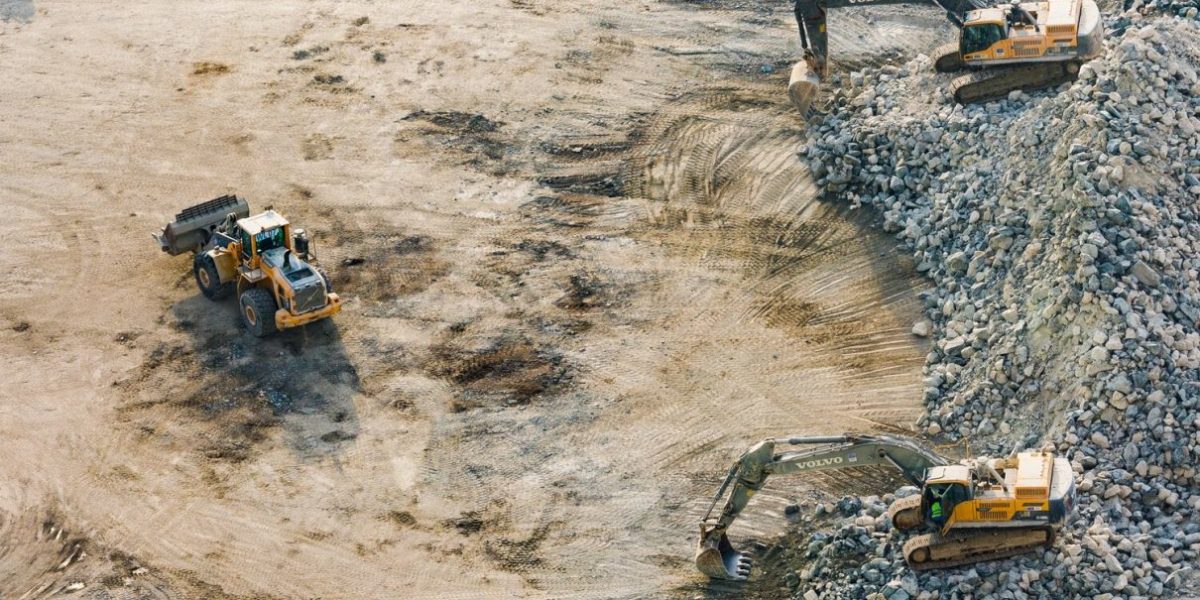If you’re trying to get in on the crypto mining craze, then publicly traded bitcoin mining companies offer an easy way to do so. On the upside, you can make a return based on the profitability of mining bitcoin. Are there any reasons why you should pass up this opportunity? In this article, we’ll cover the basics of bitcoin mining stocks, and whether or not it’s a good idea to invest in them.
What is crypto mining?
Let’s begin by defining what crypto mining is. First, it’s important to remember that cryptocurrencies are decentralized; therefore, they aren’t issued through banks or governments like traditional currencies are. Instead, people mine coins with powerful computer hardware (known as “mining rigs”) using certain algorithms.
These algorithms run software known as mining pools, which allows miners to pool their computing power into one large group, rather than having to take on such huge costs individually. The more computational power your rig possesses, the faster you can find the solutions needed to solve complex math problems and verify transactions on the Bitcoin network.
Once solved, these problems allow for the release of new coins. When crypto miners solve the problem, they receive a reward in the form of a newly created block of bitcoins. This process repeats itself over time until the total supply, or market cap, reaches 21 million. At that point, miners will no longer be able to earn new coins, but existing ones will still continue to exist. Mined bitcoin will just come from network transaction fees at this point.
Why would I want to mine bitcoin?
For those who don’t know how crypto mining works, it may seem like there isn’t much of a reason to participate. After all, it seems like anyone could start mining at any given moment. However, while this is technically true, it doesn’t actually mean that every miner has access to the same amount of computing power. Some people have mining rigs capable of solving the kinds of difficult math problems necessary to generate new blocks. Others cannot. Therefore, if you’re interested in mining bitcoin, you need to buy the right equipment.
If you already own a computer, you might consider purchasing a graphics card specifically designed to mine cryptocurrency. There are also off-the-shelf mining rigs available. One popular option is a Genesis Mining ASIC miner. These units can be purchased directly from the manufacturer for anywhere between $500 and $3500. Of course, you’ll also have to pay for electricity and internet connectivity. While this is not an inexpensive endeavor, it does offer the potential for a high return on investment.
Is investing in crypto mining stocks better than investing in hardware?
There are two primary ways to invest in crypto mining. The first is by buying mining rigs, then renting out the processing power for profit. You can purchase mining rigs online, but the most effective method is to rent them from third party websites. For example, CoinTerra offers mining hardware rentals starting at around $10 per day.
The second method is to invest in publicly traded mining stocks that owns mining rigs. Companies such as Bitmain and Giga Watt provide mining rigs for use by investors. They also sell shares in their companies. Companies like Marathon digital holdings run mining operations that the public can invest into.
Many of these companies offer high returns, due to the significant amount of computing power involved in mining. However, they are also extremely risky investments. Since they are highly dependent upon the success of the underlying asset, investing in these companies is akin to placing bets against the market.
What are the advantages of mining stocks?
One of the biggest advantages of investing in mining stocks instead of hardware is that they are relatively risk-free. For many investors, the prospect of losing money on an expensive piece of equipment makes mining unappealing. However, mining stocks give you the ability to earn a return without putting up anything of value yourself. You can also easily liquidate your position if you decide to stop mining.
What are the advantages of buying Bitcoin miners?
On the other hand, some people believe that mining stocks are less profitable than owning mining rigs. This is because they must spend money on things such as rent, salaries, and maintenance. Also, since they are publicly traded, they have to maintain shareholder expectations. This means that they cannot operate in a manner that harms their business model, even if it results in lower profits. If they fail to meet these obligations, shareholders may lose confidence in their company, causing their stocks to crash.
In this sense, these companies are somewhat like regular businesses. They require management, marketing, and accounting. Additionally, they must abide by laws concerning corporate governance, and they must comply with the regulations of the SEC. All these factors put pressure on a Bitcoin mining company to maximize its profits, often at the expense of the individual miner.
How do I choose between hardware and mining stocks?
If you’re interested in crypto mining, the decision comes down to personal preference. Both methods allow you to participate in the industry, albeit in slightly different ways. If you prefer to manage your own assets, then you should opt for hardware. However, if you lack the technical knowledge required to set up and maintain mining equipment, then it may be worth buying shares in a publicly traded company.
It’s also important to keep in mind that these mining operations have gone public recently. This means that you could potentially see a return on your investment within a matter of months. This is something that you won’t be able to say about hardware, which takes years to generate a profit. If you’re willing to wait five or ten years to make a return, then hardware is probably the best option for you.
In conclusion
If you’re considering investing in mining stocks, then you should understand exactly what you’re getting into. Returns on some mining stocks are very similar to the mining rigs that you’d buy in a store. However, they are also subject to many of the same risks as any publicly traded company.
If you’re looking for an alternative to traditional investing, then mining stocks offer a unique opportunity. However, it’s important to remember that you’re taking a gamble when you invest in them.



![Pros And Cons Of Investing In Mining Stocks [New Info]](https://www.minesite.com/wp-content/uploads/2019/04/mariusz-prusaczyk-185176-unsplash-1210x642-1-1200x600.jpg)

